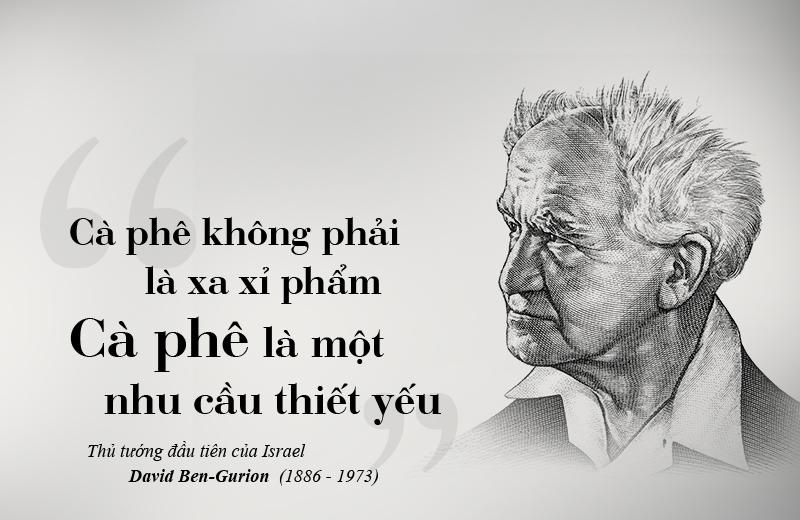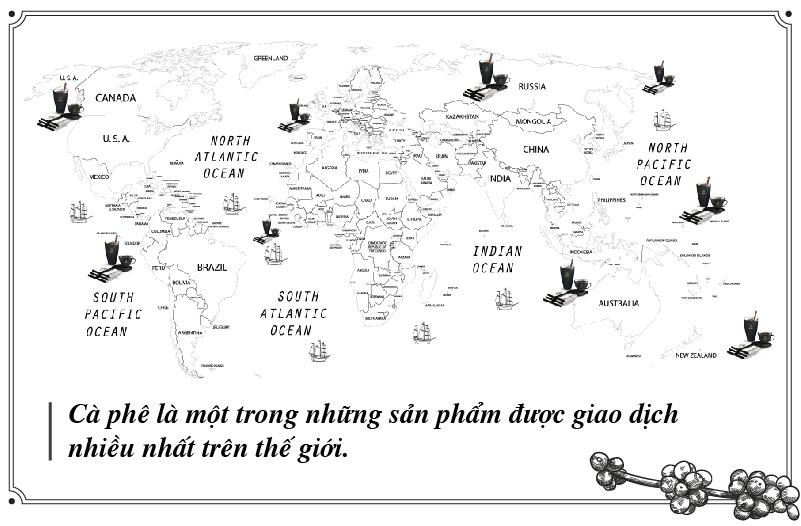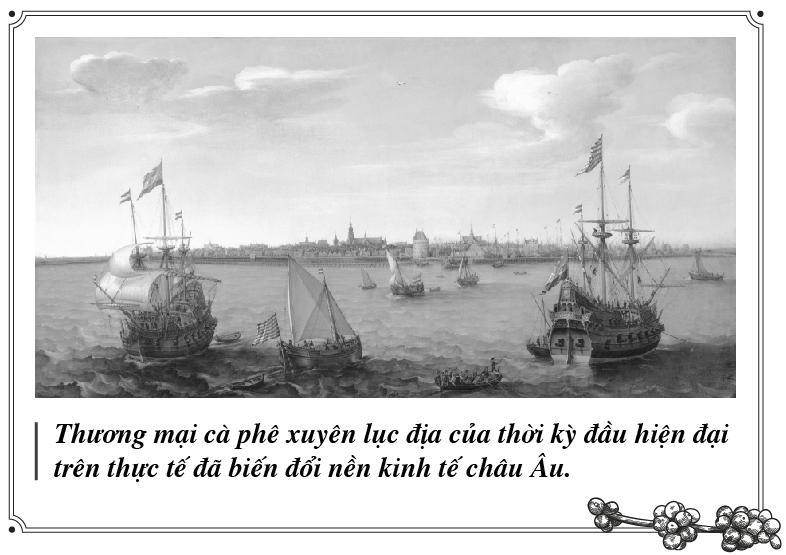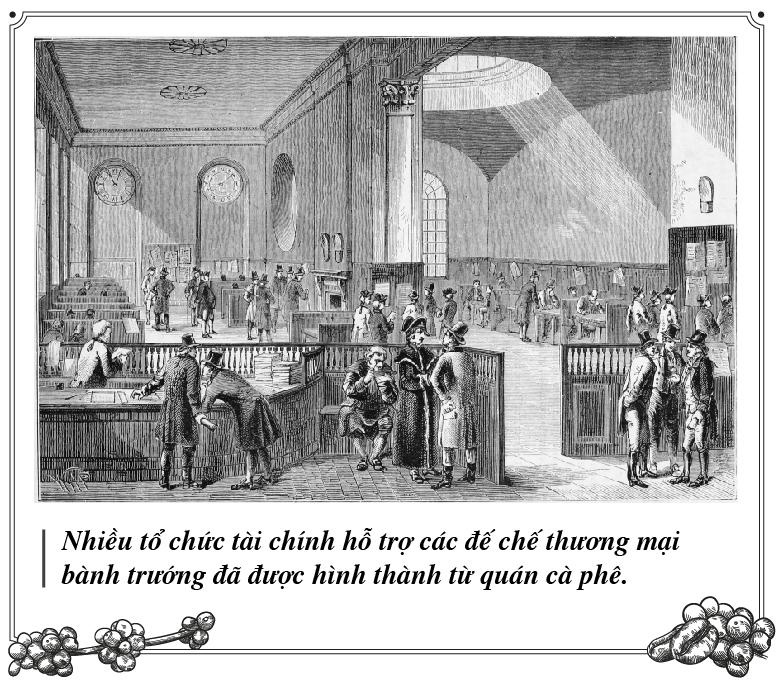Article 79: Brief history of coffee economy
The truth is, when coffee comes to any land or country, it makes great strides in the economic and social appearance of that country.

“Coffee is not a luxury, but a vital necessity” – David Ben-Gurion (First Prime Minister of Israel)
Dominating Era of Ottoman Empire
After discovering the benefits of coffee beans, the Ethiopians grew coffee in the mountains of Yemen – the land occupied by Ethiopia. By the 15th century, coffee was already an essential drink and was popular throughout the Arabian Peninsula, Persia, Egypt, Ottomans, and North Africa, making coffee a valuable profitable commodity.

Coffee is one of the most traded products in the world.
In the mid-16th century, the Ottomans invaded Yemen and quickly realized the economic potential of coffee. From here, the process of trading coffee on a global scale officially began. Coffee beans were purchased and exported from Yemen by two routes. An overland route led to Mecca, Medina, Damascus, Aleppo, Constantinople. Another route through seaports in the western part of the Arabian peninsula was by sea to the Mediterranean, and then into Europe.
At that time, Mocha was a busy coffee trading port, attracting merchants from all over the world, including India and European countries. Mocha became the name of this region’s coffee. Coffee in this period was a luxury that brought huge profits. The benefits from coffee contributed to the Ottoman development to its zenith, becoming one of the most powerful political entities in the world. To control the coffee trade, the Ottomans banned the distribution of raw seeds or seedlings, the beans had to be boiled or roasted before export.
Europe changed its economic balance
In the 17th century, the global demand for coffee increased, European merchants sought to break the trade monopoly and compete for market share. In 1609, the British East India Company established a trading post in Mocha. Next, in 1614 the Dutch East India Company approached the Yemeni trading ports. In 1616, the Dutch brought coffee plants from Mocha to Amsterdam, but it was not until 1696 that the Dutch were able to grow coffee on a large scale on colonial lands in Asia and America. In the early 18th century, the Netherlands became the world’s largest coffee producer and supplier. The Netherlands even surpassed Spain and Portugal, becoming the flourishing empire that dominated maritime trade.

The transcontinental coffee trade of early modernity practically transformed the European economy.
In 1714, the mayor of Amsterdam presented a coffee tree to King Louis XIV of France. The French began to grow coffee on the island of Martinique, from which it spread throughout Central – South America and the Caribbean. The British Empire by 1815 took over the coffee plantations of Ceylon from the Netherlands and quickly became a major force in the global coffee trade. Although coffee was not a priority for the British colonial economy, with the favorable development of the raw material area and the increased demand for sea transport, Britain made a lot of money from the coffee trade. In the second half of the 18th century, coffee production in the French colonial countries increased, France and the Netherlands directly competed against each other.
Meanwhile, the industrial revolution changed the mode of production from manual labor to machine manufacturing. Factory work required an alert mind and physical agility to operate equipment. The drinks that were prevalent throughout Europe at the time were beer and wine, which did not fit this new context. Thus, coffee became a new daily habit, a cultural practice in Europe, then spread to North America. This led to coffee becoming the most valuable commercial product in the world, known as “black gold”. Partly for the sake of coffee-related profits, the European powers invaded the countries of Asia, America, and Africa as farming plantations. Expanding the coffee raw material area was associated with imperialism, bringing economic benefits to the countries that controlled the colonies. The mass production of coffee brought coffee to all continents.
The Rise of the Americas
In the 19th century, coffee underwent a fundamental change, spurring industrial economies and becoming the center of the agricultural economy in many countries of the Americas. The countries of Venezuela, Colombia, Mexico, Jamaica, Brazil… gained independence, creating a new leap for the coffee industry. While Africa and Asia reduced production, in 1850 Brazil accounted for more than half of the world’s coffee.
During this period, the United States was both the world’s leading coffee consumer and the center of coffee industrialization. In 1790, the US built coffee factories in New York, officially joining the coffee trade. Around 1860, packaged roasted coffee was sold on the New York market. In 1864, the US invented the industrial coffee roaster, revolutionizing coffee production. In 1865, the first commercial coffee trademark was registered. In 1881, the coffee exchange market was established in New York. In 1900, vacuum packaging was invented to keep coffee fresh longer. In 1906, the United States produced the first mass-produced refined instant coffee.

Many financial institutions that helped expland commercial empires were born out of coffee shops
In the 19th century, the coffee trade expanded 20-fold. Americas asserted significant influence over the global market. Because of the economic importance of coffee exports, in 1940, the US and some Latin American countries agreed to allocate export quotas so that each country was guaranteed a certain market share. In 1962, the coffee producing countries and the consuming countries signed the International Coffee Agreement in order to maintain the quotas of the exporting countries and keep the coffee market stable.
The miracle of Vietnam and the progress of Asia
From the second half of the 20th century, coffee power shifted to Asia. The countries of the tea continent have become present in every step of the coffee supply chain, from production to technology provision, branding and promotion of coffee culture.
Vietnam, India, Thailand, Indonesia, Philippines… emerged as raw material areas for global coffee supply. In which, Vietnam is the most typical representative. In the late 1990s, Vietnam became a world coffee power. Countries with a tradition of tea drinking such as Japan, China, and Korea are now the leading global coffee consumption markets, able to compete with the US. Coffee brands from Asia such as Trung Nguyen Legend, G7 instant coffee (Vietnam), Caffe Bene (Korea), Suntory Boss (Japan)… have covered all continents.

Asia is becoming the focus of the global coffee industry and is one of the high potential markets in the future.
According to a report by the International Coffee Organization (ICO), Asia has the most dynamic coffee consumption growth in the world, the continent is becoming the “promising land” of the coffee industry. Especially, with the expansion of the market, coffee is now a key product in the economy in Southeast Asian countries, it is expected that profit margin is still very abundant.
Currently, the global coffee market is worth more than $100 billion. Above all, the world economic system is gradually transforming into a green economy, a creative economy with the core being the creative capacity of each individual, organization and country. Coffee increasingly occupies a special place in the world economic order, playing the role of a source of “awakening and creative” energy, the most popular and most consumed concocted drink in the world. Now countries that actively develop their cultural potential, indigenous knowledge and creative forms related to coffee can seize the opportunity to lead the coffee industry, contributing to soft power, smart power for that country in the era of green economy, creative economy.
THE REAL COFFEE
ROASTED ONLY FOR PEOPLE OF WISDOM!
Source: “The Philosophical Way of Coffee” – copyright by Trung Nguyen Legend


